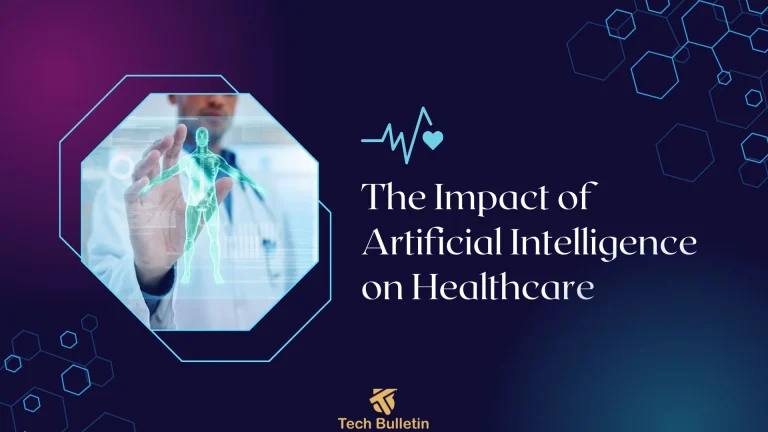Challenges and Opportunities of Using AI in Patient Care Management

Artificial Intelligence (AI) is revolutionizing industries worldwide, but nowhere is its impact more profound than in healthcare. AI in patient care management, a core pillar of healthcare delivery, is being transformed through data-driven decisions, smart automation, and real-time monitoring. From early diagnosis to post-treatment follow-ups, AI tools are redefining how care is delivered, making it faster, more precise, and in many cases, more compassionate.
In 2024 alone, the global AI in healthcare market exceeded $22 billion, with forecasts estimating it will reach over $187 billion by 2030 (source: Statista). Despite this growth, integrating AI in patient care comes with both significant opportunities and notable challenges.
Hype vs. Reality: Is AI Really Transforming Healthcare?
AI’s potential in healthcare is enormous, but so is the hype. Many believe AI will replace doctors. In truth, it’s augmenting them. While it can analyze thousands of data points in seconds, it can’t replicate human empathy, clinical intuition, or ethical judgment. So, is AI living up to the expectations?
Key real-world capabilities of AI in patient care:
| Function | AI Capabilities |
|---|---|
| Diagnosis | Detects anomalies in radiology scans with 95%+ accuracy |
| Treatment recommendations | Detects anomalies in radiology scans with 95 %+ accuracy |
| Administrative automation | Reduces documentation time by 40-60% in some hospitals |
| Predictive analytics | Tailor’s plans using historical EHR and genomic data |
| Virtual nursing assistants | Flag patients at high risk of complications or readmissions |
Yes, AI is truly transforming healthcare, but it’s a complement, not a substitute.
The Core Challenges in AI Implementation

Despite AI’s promise, its integration into real-world healthcare is far from seamless. Here are the core obstacles:
1. Data Privacy and Compliance Issues
Healthcare deals with sensitive data medical records, genetic profiles, and personal identifiers. Ensuring HIPAA and GDPR compliance is non-negotiable. AI systems must be secure, transparent, and regularly audited.
In a 2023 survey by PwC, 71% of healthcare executives identified data privacy as their primary AI concern.
2. High Initial Investment and ROI Uncertainty
Deploying AI involves not just software but infrastructure, staff training, and ongoing maintenance. For smaller clinics and underfunded public hospitals, the upfront costs are often too high to justify, especially when ROI is uncertain.
3. Integration with Existing Systems
Many hospitals still run on legacy Electronic Health Records (EHR) systems. Integrating modern AI solutions into outdated infrastructure can be time-consuming and technically complex, requiring costly middleware and data normalization.
4. Ethical Dilemmas and Bias in AI Algorithms
AI models are only as good as the data they’re trained on. If the training data is biased, the outcomes will be too. For example, diagnostic tools trained on datasets lacking racial diversity may underperform in minority populations.
In 2022, a leading algorithm used in over 200 hospitals was found to underestimate the health needs of Black patients due to training bias (Nature journal).
Major Opportunities in AI-Driven Healthcare

Despite the roadblocks, the rewards of successful AI implementation are game-changing.
5. Predictive Analytics for Proactive Care
AI excels at spotting patterns invisible to humans. By analyzing vast datasets, it can predict who’s at risk of conditions like stroke, diabetes, or cardiac arrest, allowing providers to act before symptoms even appear.
Mount Sinai’s predictive model reduced sepsis-related deaths by 17% through early warning systems.
6. Enhanced Patient Monitoring and Remote Care
With wearable devices, AI tracks real-time vitals like heart rate, glucose levels, or oxygen saturation. It alerts caregivers when parameters exceed thresholds, enabling remote, continuous care, especially vital for elderly or rural patients.
Apple Watch’s atrial fibrillation detection algorithm is FDA-cleared and widely used in heart care.
7. Administrative Efficiency and Cost Reduction
AI automates repetitive tasks like billing, appointment scheduling, and clinical documentation. This not only reduces errors but also frees up 20-30% of doctors’ time, improving patient interaction.
A McKinsey report estimates that $300 billion could be saved annually in the U.S. through AI-driven administrative improvements.
7 Key Insights That Are Changing Healthcare

1. AI Doesn’t Replace Clinicians — It Empowers Them
AI isn’t here to take over the roles of doctors, nurses, or other healthcare professionals. Instead, it’s designed to support clinical decision-making by offering insights, reducing repetitive tasks, and flagging risks earlier than humanly possible. For example, AI can scan thousands of medical images in minutes, identifying patterns that might be missed by the naked eye. But the final call still belongs to the human clinician, who understands context, patient history, and emotional nuances.
A radiologist might use AI to prioritize suspicious scans, allowing them to focus attention where it’s needed most, speeding up diagnosis and treatment.
2. Data Quality Is More Important Than Quantity
While AI thrives on big data, poor-quality data leads to poor-quality outcomes, regardless of volume. For AI to provide accurate predictions and diagnoses, the data it learns from must be clean, relevant, diverse, and up-to-date. In healthcare, this means eliminating errors, ensuring consistency across records, and training algorithms on diverse datasets to avoid biased outcomes.
An AI trained only on data from middle-aged males may fail to diagnose heart disease in women or younger patients accurately.
3. Ethical AI Is as Critical as Technical AI
AI’s logic must align with ethical principles like fairness, accountability, and transparency. In healthcare, lives are at stake, so every algorithmic decision must be auditable, explainable, and free from bias. Ethical AI also means ensuring patient consent, respecting privacy, and avoiding automation that could compromise human dignity.
According to the World Health Organization, transparency and human oversight are two of the six core ethical principles for AI in health.
4. Personalized Medicine Is Now Reality, Not Future
With AI, treatments can be tailored to individual genetic profiles, lifestyle factors, and environmental conditions. This approach, called precision medicine, offers better outcomes with fewer side effects. Instead of the “one-size-fits-all” model, AI allows doctors to recommend therapies most likely to succeed for each patient.
AI-driven genomic analysis can predict how a cancer patient might respond to a specific chemotherapy drug, allowing for targeted treatment.
5. Continuous Learning Models Make AI Smarter Over Time
Unlike static systems, many AI tools use machine learning, which means they improve with experience. As more data is fed into the system, whether from wearable devices, EHRs, or patient feedback, the algorithm refines its predictions and recommendations.
A diabetes management app can adjust insulin recommendations over time as it learns from user input and blood sugar readings, resulting in smarter, real-time care.
6. Patient Trust Is Won Through Transparency
Patients are more likely to embrace AI when they understand how it works and how their data is used. Transparent communication builds trust, especially when it comes to explaining that AI tools support but do not decide treatments independently. Trust also grows when healthcare providers are open about data handling, risks, and benefits of AI technologies.
Hospitals that involve patients in AI trials and share decision-making processes often see higher engagement and satisfaction rates.
7. Interdisciplinary Collaboration Is Key to Success
Successful AI in healthcare isn’t built by tech experts alone. It requires collaboration between data scientists, clinicians, ethicists, patient advocates, and IT professionals. By blending diverse expertise, healthcare systems can develop AI tools that are not only technically sound but also clinically relevant, legally compliant, and ethically safe.
The Mayo Clinic employs cross-functional teams when deploying AI tools, ensuring every perspective from tech to patient experience—is considered.
Real-World Examples of AI in Action

Case Study: IBM Watson in Oncology
IBM Watson partnered with Memorial Sloan Kettering to deliver personalized cancer treatment recommendations. It digested over 600,000 medical records and produced actionable plans in seconds.
However, it faced criticism for recommending unsafe treatments at times, showing the need for human oversight even in the most advanced systems.
Case Study: AI-Powered Sepsis Prediction at Johns Hopkins
Using machine learning models trained on EHR data, Johns Hopkins developed an early warning system for sepsis. The system reduced ICU admissions and saved hundreds of lives annually.
It flagged 82% of sepsis cases 6 hours earlier than clinicians.
FAQs
1. Is AI replacing doctors?
No. AI supports doctors by analyzing data, suggesting treatments, and automating tasks, but final decisions remain with humans.
2. How does AI improve patient outcomes?
AI helps detect diseases early, monitors vitals in real-time, and personalizes treatments—leading to faster recovery and fewer complications.
3. Is patient data safe with AI?
Yes, if systems follow HIPAA, GDPR, and encrypt data. However, continuous audits and transparency are essential.
4. What are the biggest AI challenges in hospitals?
Data integration, staff training, ethical concerns, and the cost of implementation are major barriers.
5. Can small clinics use AI?
Absolutely. Many AI tools are cloud-based and scalable. Clinics can start small, like using AI for appointment scheduling or billing.
6. Are there AI tools available for mental health care?
Yes. AI chatbots like Woebot and Wysa offer cognitive-behavioral therapy support and emotional monitoring.
Conclusion
AI in patient care isn’t just a trend, it’s a transformation. While challenges like data privacy, integration, and ethics remain, the opportunities are too significant to ignore. With thoughtful implementation, AI can enhance, not replace, human expertise, making care more accurate, accessible, and compassionate. Healthcare must embrace AI, not to dehumanize care, but to refocus it on what matters most: the patient.





